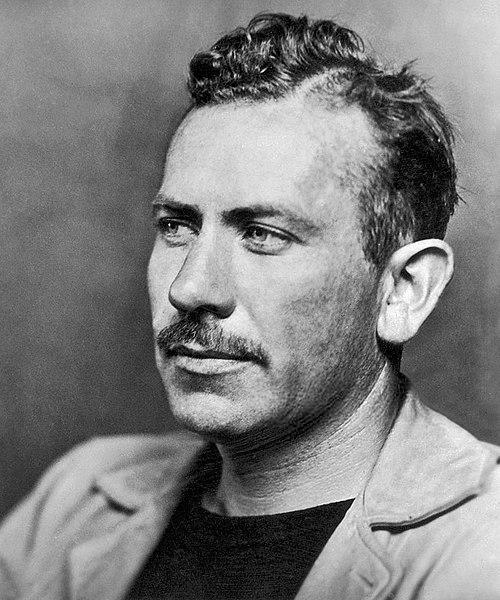
John Steinbeck in 1939
Español
August 10, 2025
by Philip Gambone
Like many Americans of my generation, my junior high and high school English curriculum included a healthy selection of works by John Steinbeck: The Pearl, The Red Pony, The Grapes of Wrath. What we young readers were expected to pull out of these books was echoed in Steinbeck's acceptance speech for the Nobel Prize in 1962. On that occasion, he said that a writer "is delegated to declare and to celebrate man's proven capacity for greatness of heart and spirit–for gallantry in defeat–for courage, compassion and love."
Greatness of heart and spirit certainly characterizes Steinbeck's first important commercial success, Tortilla Flat (1935), which concerns a band of fun-loving, hard-drinking Mexican Americans who live in a shantytown above Monterey, California. In this, his fourth novel, the twenty-eight-year-old Steinbeck began to find his true voice and some of his major themes. The book also paid homage to his life-long love for Mexico and Mexicans.
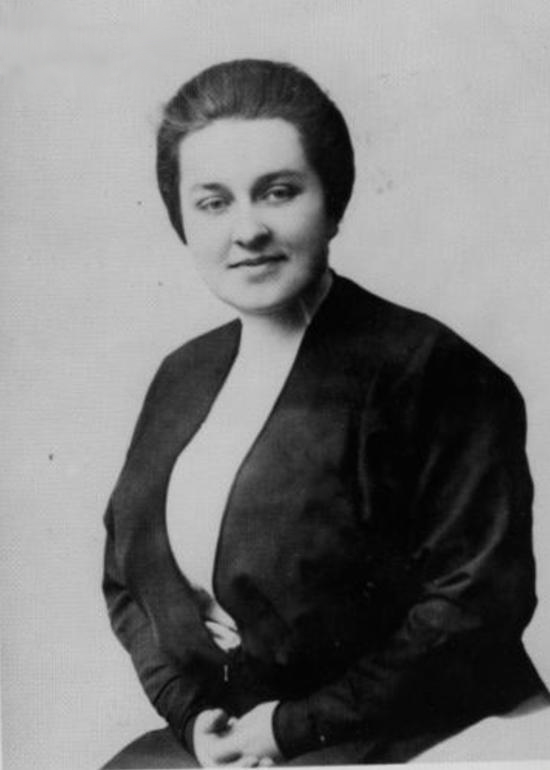
Edith Mirrielees
*
Steinbeck grew up in Salinas, California, where he rubbed shoulders with many Mexican Americans. According to friends who remembered him, he was a "born storyteller" and a "deep thinker." By the time he enrolled at Stanford in 1919, he was already dreaming of becoming a writer. His creative writing instructor, Edith Mirrielees, remembered him as "terrifically shy and often lazy" but with "an unshakable confidence in his work." He managed to publish a few stories during his college years. One of his classmates thought his efforts were "grand" and "easy to follow."
Steinbeck's time at Stanford was desultory. He took only the courses he wanted to take and spent most of his time in the library. His intermittent efforts to complete his degree finally ended when he dropped out of Stanford for good in the spring of 1925.
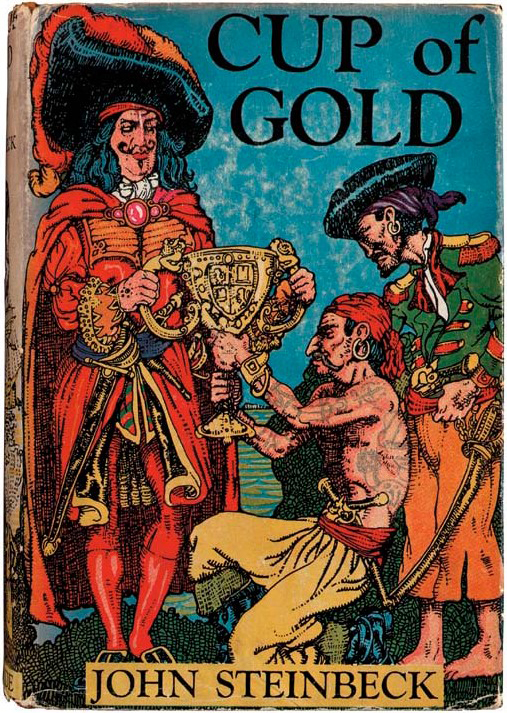
During the next few years, Steinbeck published three novels, including Cup of Gold (1929), a saga about the 17th-century buccaneer, Henry Morgan. This early effort was marred by what Jay Parini, one of Steinbeck's biographers, calls a "baroque" and "inflated" style, "ornate, precious and convoluted."
In 1930, Steinbeck married his first wife, Carol Henning. She had a job with Roosevelt's Emergency Relief Organization (ERO), which brought her into contact with many Mexican immigrant families. From them, she picked up stories that she would recount to her husband. Steinbeck also heard stories of poor Mexicans from Susan Gregory, a high school teacher of Mexican descent. All this material started brewing in his creative mind. To his publisher, he wrote, "I have started another volume and it is going like wildfire. It is light and I think amusing but true, although no one who doesn't know paisanos would ever believe it." The book would become Tortilla Flat.
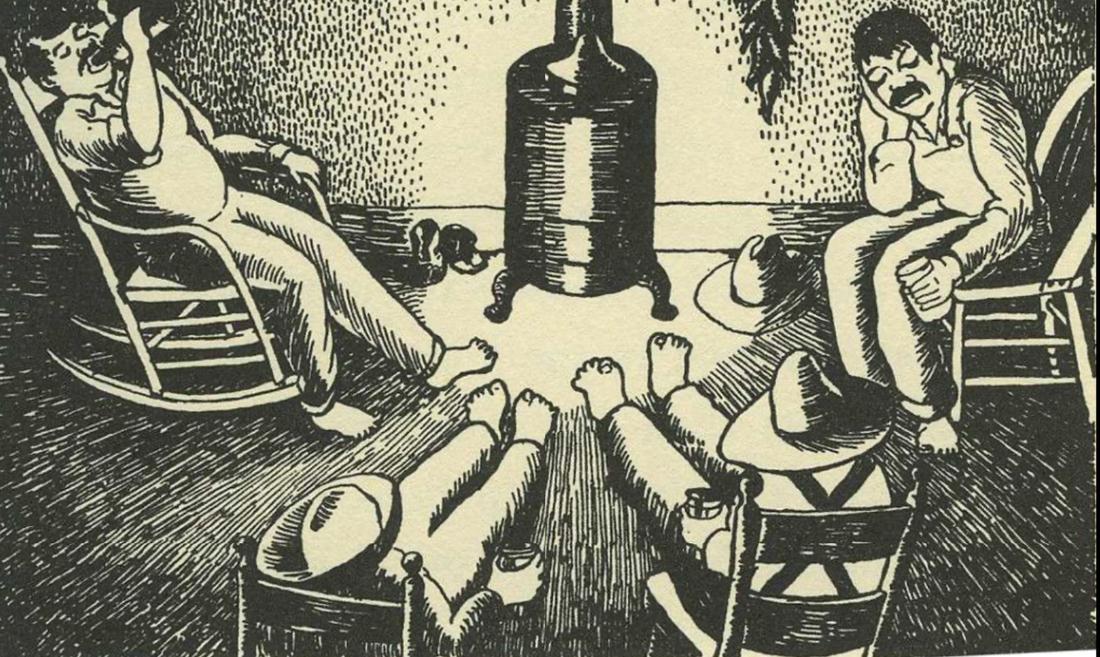
Ruth C. Gannett illustration
*
He finished the novel in March 1934. Neither his agent nor his publisher liked it. One called it "trivial"; the other "too slight." It was turned down by several publishing houses. But one publisher, Pascal Covici, fell in love with it and agreed to publish it. The book appeared in May 1935 accompanied by 19 pen-and-ink illustrations by Ruth C. Gannett. The book turned out to be a hit with the public. Its publication was a "turning point" for Steinbeck, says Parini. The young author was no longer a "struggling writer."
Tortilla Flat is a novel only in the loosest sense. Essentially a collection of linked stories, it follows the life of twenty-five-year-old Danny–"small, dark, and intent"–and his friends, a group of Mexican American paisanos. "Good people of laughter and kindness," Steinbeck writes, "of honest lusts and direct eyes, of courtesy beyond politeness." This merry band of down-and-out fellows was, in fact, loosely modeled after Malory's version of King Arthur and his knights, a book Steinbeck loved.
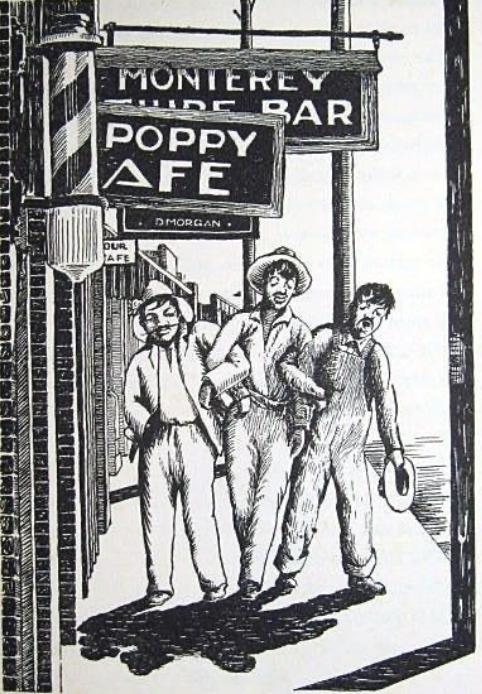
Ruth C. Gannett illustration
*
To make a little money, the paisanos sometimes take up odd jobs–cutting squid, pumping gas, or collecting wood–but by and large, the pursuit of "holy friendship" is their main purpose in life. "It's good to have friends," Danny says. "How lonely it is in the world if there are no friends to sit with one and to share one's grappa."
Steinbeck presents us with a motley cast of amigos. There's the Pirate, who gets his clothes from the back doors of houses and his food at the back doors of restaurants, a kind of scruffy St. Francis. And Pilon, whose homegrown philosophy is summed up when he says, "Love and fighting. Love and fighting, and a little wine. Then you are always young, always happy."
Additionally, we meet Big Joe Portagee, who spends considerably more time in jail than out. Homeless Pablo Sanchez, on parole from jail, who "never gets tired of sleeping in ditches." And red-bearded Jesus Maria Corcoran, the "humanitarian" among them, who declares, "It shall be our burden and our duty to see that there is always food in the house for Danny. Never shall our friend go hungry."
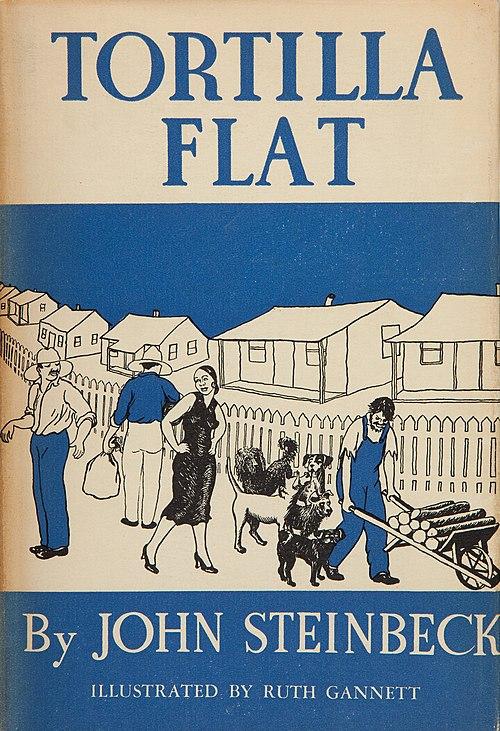
Tortilla Flat (1935)
*
None of these fellows is innocent of "the rough fingers of violent experience." They frequently get into trouble, sometimes succumbing to the temptation to steal, to shirk responsibilities, to indulge in greed. People in town call them "hoboes and tramps." But it was clearly Steinbeck's intention to show them in a positive light, as "primitive symbols," he explains in the book's Preface, "of the wind, the sky, the sun."
For Steinbeck the paisanos are "clean of commercialism, free of the complicated systems of American business, and, having nothing that can be stolen, exploited or mortgaged, that system has not attacked them very vigorously." He was out to depict, he told his agent, "the strong but different philosophical-moral system" of the Mexican Americans of the Monterey area.
Often they commit petty crimes for altruistic reasons. In one chapter, they steal copious amounts of food to help la vieja Teresina and her many children. In another, Danny steals a keg of copper shingle nails and uses the money to buy pretty "Sweets" Ramirez a vacuum cleaner. Overall, like naughty boys, these guys are never so bad that they cannot be forgiven. Biographer Parini calls the novel a "satire of bourgeois morality."
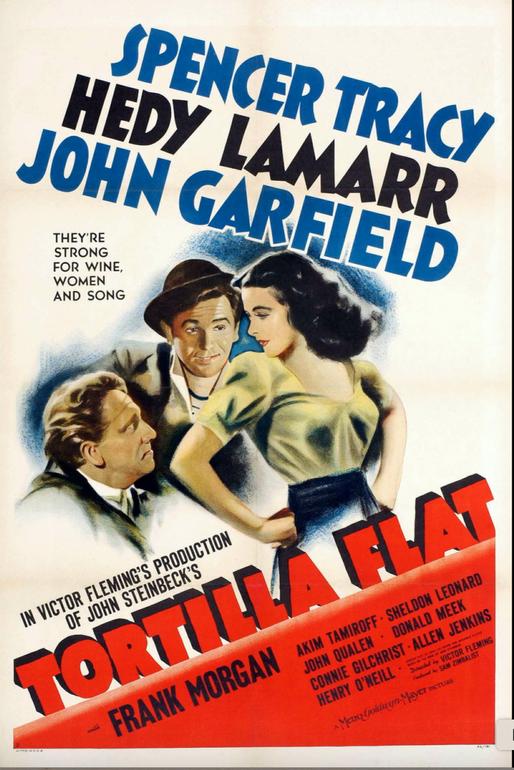
Tortilla Flat movie poster
*
In recent years, the social realism and sympathetic character portrayal that Steinbeck aimed for have found their critics. The faultfinding runs from the benign charge that he romanticized his band of poor paisanos to scathing analysis of his portrayal of Mexican Americans, which some critics call caricatures. "Tortilla Flat stands as the clearest example in American literature of the Mexican as jolly savage," writes Arthur C. Pettit. "The novel contains characters varying little from the most negative Mexican stereotypes." They are, he says, "ethnically based distortions." Another critic says that Steinbeck's treatment of women and people of color leaves "a lot to be desired."
I'm inclined to agree with these critics. And while I recognize that Steinbeck fully intended to give us a sympathetic portrait of a group of people whom he lived among and admired, the brush he painted with in trying to celebrate the lives of these lovable, down-and-out characters is awfully broad. The result was a collection of poster-board characters who lack the complexity and nuance of fully realized, three-dimensional human beings of whatever ethnicity.
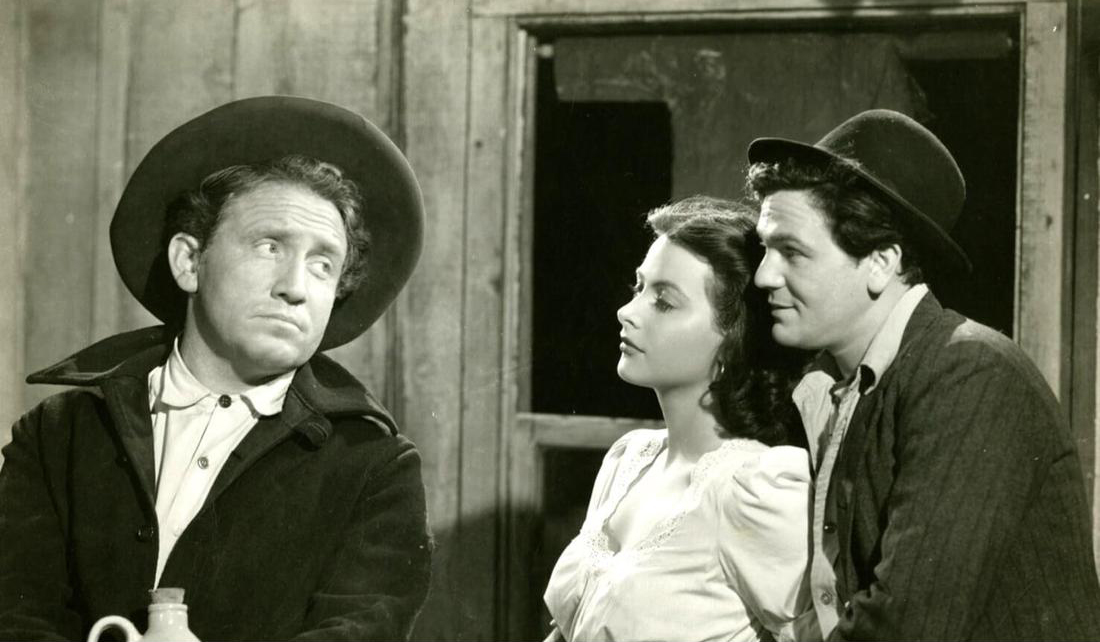
Tracy, Lamarr, Garfield
*
In 1942, Warner Brothers released a film version of Tortilla Flat. It starred Spencer Tracy as Pilon; Hedy Lamarr as Sweets Ramirez; John Garfield as Danny; Frank Morgan as the Pirate; and Akim Tamiroff as Pablo. The trailer, full of Hollywood's penchant for hyperbole, described the picture as "The restless, surging story of a fierce, proud breed of men … and the women they loved! Spectacularly filmed against the giant background of a California wonderland! With an outstanding star in each fabulous role!" (That's a lot of exclamation marks!) Director Victor Fleming brought out some fine performances from his cast, but you'll be hard-pressed to image them as a bunch of Mexican Americans.
By all means, if you haven't already done so, read Tortilla Flat as an early example of the heroic reach Steinbeck was aiming for and later magnificently achieved.
(This is the first of three articles on John Steinbeck and Mexico.)
**************

Phil Gambone, a retired high school English teacher, also taught creative and expository writing at Harvard for twenty-eight years. For over a decade, his book reviews appeared regularly in The New York Times. Phil is the author of seven books. His memoir, As Far As I Can Tell: Finding My Father in World War II, which was named one of the Best Books of 2020 by the Boston Globe. His new collection of short stories, Zigzag, was published last year by Rattling Good Yarns Press. His books are available on-line, at Aurora Books and at the Biblioteca bookshop.
**************
*****
Please contribute to Lokkal,
SMA's online collective:
 ***
***
Discover Lokkal:
Watch the two-minute video below.
Then, just below that, scroll down SMA's Community Wall.
Mission

Visit SMA's Social Network
Contact / Contactar

